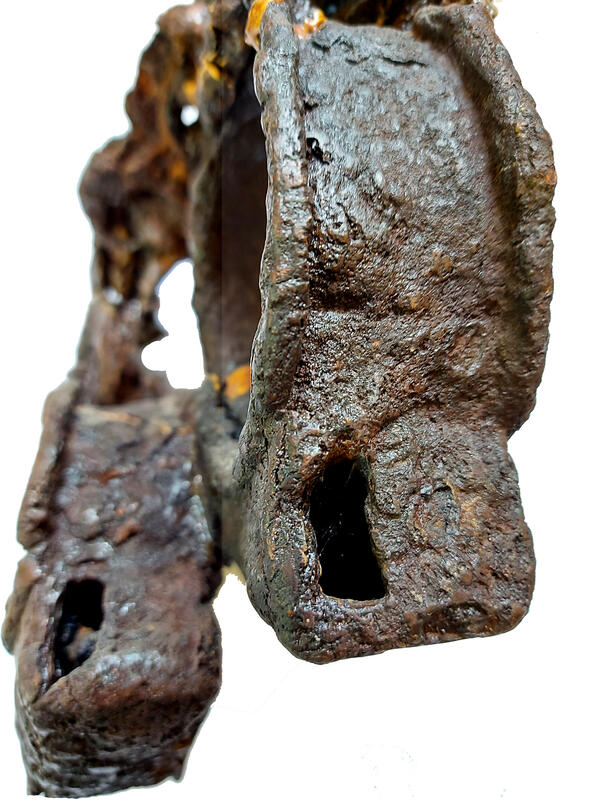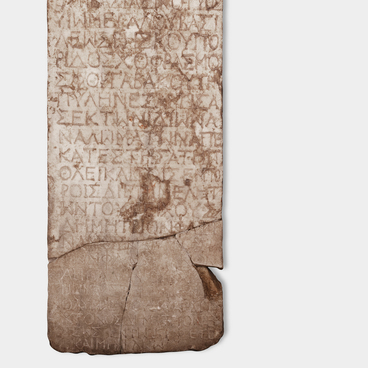Archaeological excavations in the central fortress of Tanais have revealed unique findings. Among them were iron shackles dating back to the 3rd century CE. They are one of the types of metal handcuffs used in ancient times to restrain prisoners and slaves. The presence of such shackles in Tanais suggests that the fortress was an important trade center exporting main products such as grain, fish, animal hides, and fur. In addition to these products, slaves were brought to cities along the coast of the Bosporus Strait and the Mediterranean Sea. This practice was common at the time, as slaves were in high demand for various economic and social activities.
The Tanais shackles consist of two rounded hoops linked together by a short chain. They are constructed from wide plates with long edges that are curved outward. The plates taper at the ends, smoothly transitioning into loops to which an eight-sided chain is attached. Each hoop features a lock in the shape of a rectangular box, with a keyhole on one of its narrow sides. The key is a long and thin rectangular plate with two narrow projections at one end. These projections were likely inserted into the lock. By pressing the key up or down, the shackles were unlocked. Based on the size of the restraint devices, it appears that these were leg shackles. Interestingly, the shackles were discovered in the basement alongside an iron hook embedded in the wall. This hook may have served for hanging the shackles, or it could have been part of a system designed to store and display them.
Such finds are of great value to archaeologists, as they provide insight into ancient practices and customs. The analysis of these artifacts helps to reconstruct the social, economic, and cultural aspects of life in ancient cities. In this case, the presence of leg shackles indicates that Tanais was part of the trade routes along the Black Sea and the Mediterranean Sea coasts and shows that the slave trade was actively developed in that region.



